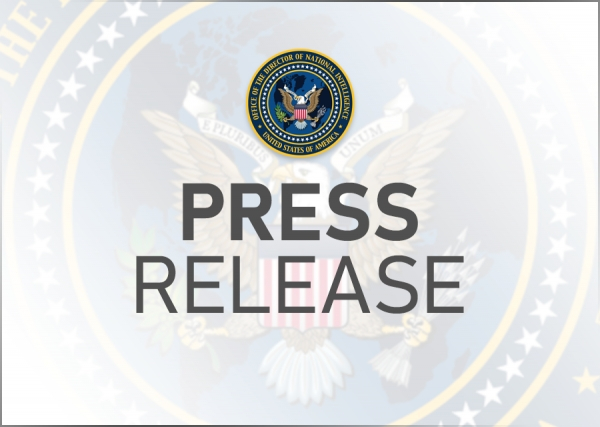FOR IMMEDIATE RELEASE
September 11, 2023
9/11 Statement from National Counterterrorism Center Director Christy Abizaid
When al-Qa`ida killed 2,977 people on September 11, 2001, our country had no greater priority than to stop Bin Laden and his followers from continuing their campaign of terror and plunging the world into a backwards vision of oppression and violence.
Twenty-two years later, a new intelligence assessment states al-Qa`ida is at its historical nadir in Afghanistan and Pakistan, and its revival is unlikely. It has lost target access, leadership talent, group cohesion, rank-and-file commitment, and an accommodating local environment.
This is just the most recent example of what the United States and its allies and partners have achieved in the years since those terrible attacks.
Across four U.S. Administrations, we have sustained a core counterterrorism effort—tailored to the challenges of the time—that has reduced the danger to the U.S. Homeland and forced a reshaping of the terrorist landscape. It is important that we continue to do so.
Thanks in large part to the good work of intelligence, law enforcement, defense, diplomatic, and homeland security professionals over two decades, counterterrorism is no longer the driving force of the United States’ national security strategy. That is the right answer for our country. We are contending with a myriad of new challenges that, if uncontested, could undermine the rules-based international system. But even as counterterrorism is not the only priority, it remains a critical element of our national security responsibility to the American public. In the face of a persistent terrorism challenge, the United States Government must sustain a nimble, action-oriented counterterrorism posture, even as other priorities take center stage.
The threat of terrorism is not gone. Every week, threat-related intelligence lands on my desk, kicking into gear the behind-the-scenes work of the counterterrorism enterprise. Our Nation’s counterterrorism professionals operate tirelessly, collaboratively, and across the foreign-domestic divide to stay ahead of the threat, whether mounting a multi-lateral effort to disrupt ISIS’s ambitions to attack the 2022 FIFA Men’s World Cup; tracking down and eliminating al-Qa`ida leader Ayman al-Zawahiri in Kabul, Afghanistan; investigating fragmentary information that a U.S. person was willing to carry out a suicide operation on behalf of ISIS; providing strategic analysis on terrorists’ exploitation of remote and fragile territories, such as in Africa’s Sahel region; responding to Iran’s brazen state sponsorship of terrorism and unyielding desire to retaliate for the death of Qasem Soleimani; or tracing the transnational influencers behind the increase in racially or ethnically motivated terrorist attacks around the globe.
To sustain pressure on terrorists, we maintain an incredible confluence of capability housed in more than a dozen U.S. agencies. Regularly, we leverage intelligence collection, including by exercising the foundational and essential authority of Section 702 of the Foreign Intelligence Surveillance Act, to provide insight on foreign terrorists and their networks overseas. This intelligence enables a broad suite of response. Border security professionals can stay vigilant against travelers with nefarious intent. Diplomats can engage at high levels and in foreign capitals to open pathways for counterterrorism collaboration. We can share critical lessons learned as our partners build capabilities against local threats. Law enforcement officials at home and abroad can investigate and dismantle threats as early as possible. When necessary, we can develop options for the United States to take direct action against terrorists who pose a distinctive threat to Americans, as the President has directed several times in his tenure to extraordinary success.
And given the successful model of collaboration and intelligence-driven operational tradecraft, the counterterrorism community has the opportunity to share lessons learned with other parts of the national security apparatus—especially those dealing with complex transnational challenges, such as the illicit fentanyl supply chain—even as we stand watch for the mass casualty terrorist events against which our primary focus should and must remain.
These are the considerable efforts of America’s counterterrorism enterprise today. They are happening with fewer resources as we look to sustainably situate the counterterrorism mission amongst a broad array of national security challenges. As we calibrate toward this goal, we must do so carefully. We must still protect against the next evolution of the threat, warn of the inevitable next attack, and help make resilient our defense of the Homeland, where Americans and their communities are owed the peace of daily life.
Countering terrorism is a job that is never done. Today's system is one refined after years of battle, some won, some tragically lost. It is a system that has protected Americans time and time again. One that stands ready to keep them as safe as it possibly can. This remains a no-fail mission for the counterterrorism community. And if we do our jobs well, you’ll rarely ever hear about it.
For all those counterterrorism professionals who have and continue to serve this country every day: Thank you for your service. Thank you for your sacrifices.
###





